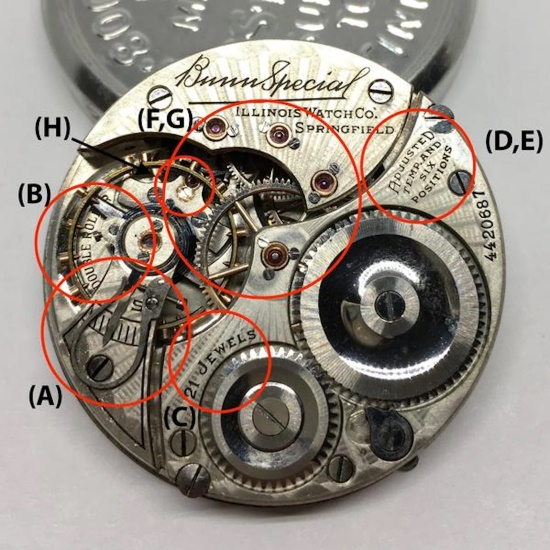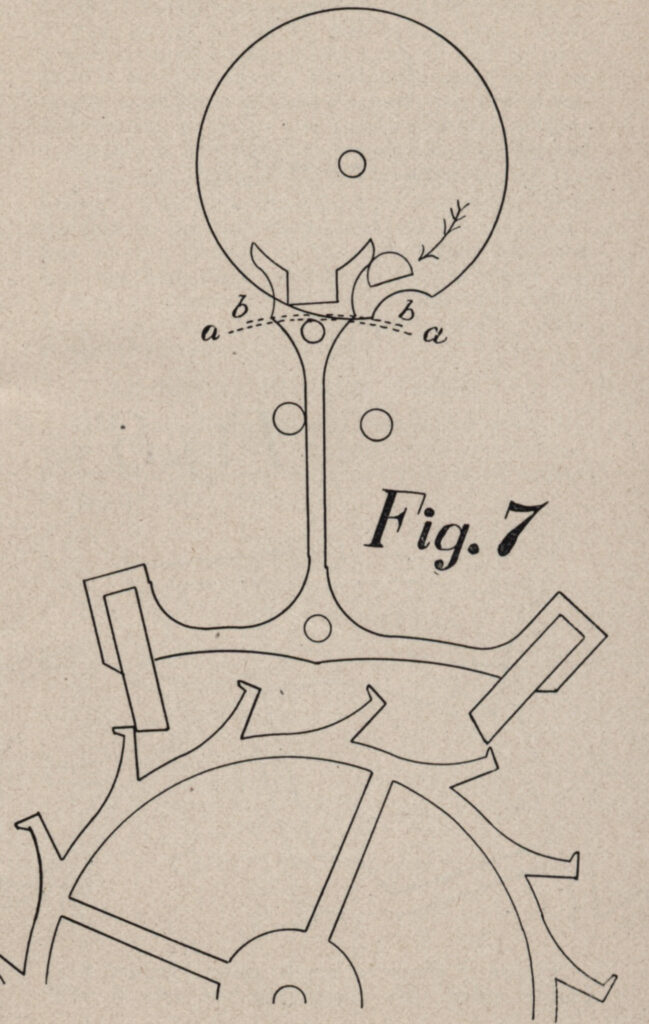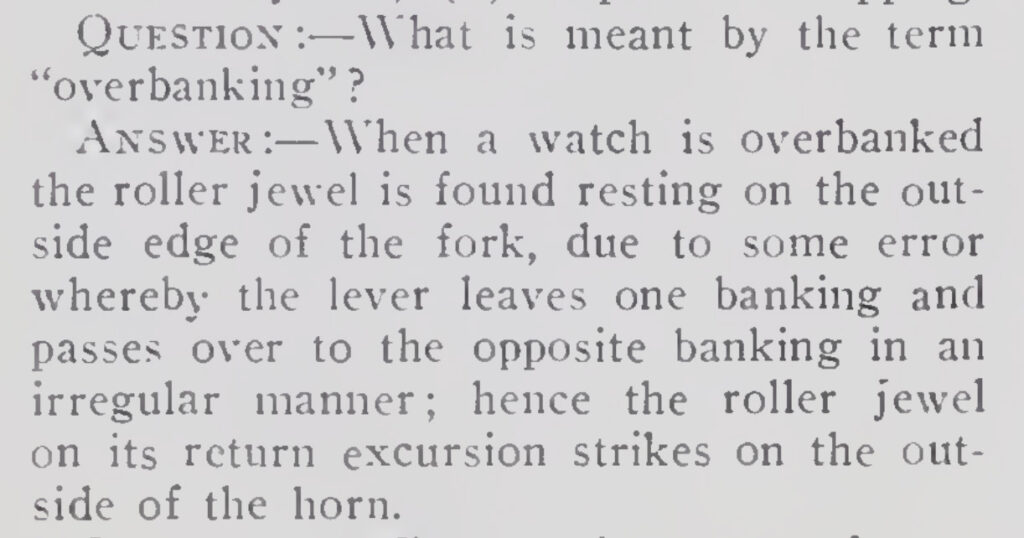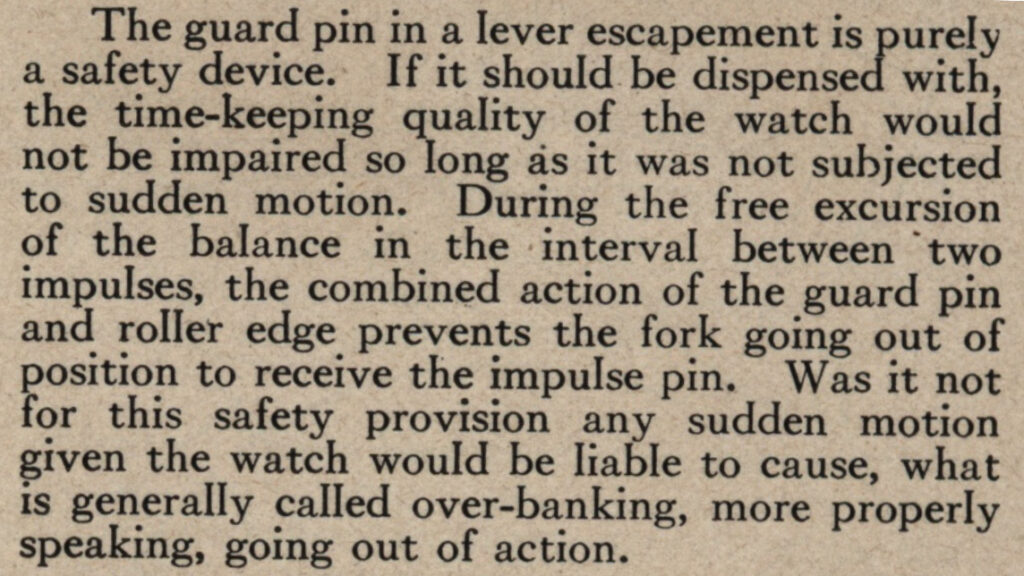
Mechanically , almost all 1900’s railroad watches shared a number of performance and reliability enhancing features.
Most had a fixed regulator to avoid timekeeping variation from impact (A), a double roller balance wheel to avoid going out of action (often called overbanking) (B), 19 or more jewels to reduce friction and increase consistency of the gear train (C), timekeeping adjustment in 5 or more positions to make sure the watch kept accurate time regardless of orientation (D), and adjustment for temperature to ensure accuracy in a variety of climates (E). Many railroad watches had solid gold or gold plated gear trains (F) and jewel settings (G) to reduce the effects of magnetism as well as reduce tarnishing, and later watches had features such as magnetically resistant balance wheels, Elinvar hairsprings, adjustments for isochronism, and advanced cap jewel covers (H).
Some of the highest end railroad watches featured an up-down wind indicator.
This is called a power reserve indicator on modern watches, and it visually communicates how much wind remains in the watch on a sub-dial at 12 O’clock.
This feature did not necessarily improve the timekeeping performance of the watch, but it is convenient to be aware of how much wind is left on the watch to avoid letting the watch run out.
________________________________________________________________________
The Pocket Watch Database is an excellent resource for getting information on antique American pocket watch movements. In addition to manufactured year, it provides a wealth of knowledge on the origin of movements, production numbers, and images.
________________________________________________________________________
Overbanking for those of you in Reo Linda, as Rush Limbaugh use to say,
doesn’t mean overdrawing your bank acount.
When the impulse jewel becomes stuck outside the horns of the pallet fork, the watch is said to be “overbanked.” This condition prevents the watch from running because the impulse jewel can no longer interact with the pallet fork to lock and unlock the escapement.
https://blog.pocketwatchdatabase.com/2022/08/22/overbanking-in-watches-failure-of-the-safety-action/
_________________________________________________________________________
“The guard pin in a lever escapement is purely a safety device. If it should be dispensed with, the time–keeping quality of the watch would not be impaired so long as it was not subjected to sudden motion. During the free excursion of the balance in the interval between two impulses, the combined action of the guard pin and roller edge prevents the fork going out of position to receive the impulse pin. Was it not for this safety provision any sudden motion given the watch would be liable to cause, what is generally called over-banking, more properly speaking, going out of action.”
A watch that overbanks, which means that the roller jewel strikes the outside of the fork, can never be timed accurately as there is no uniformity to its motion, and the least movement of the body when the watch is in the pocket will cause the watch to overbank and the roller jewel will strike the outside of the fork, thereby causing the watch to run fast, more or less, depending on the amount of double impulse that the balance may receive.
An error of the above mentioned kind may be rectified by substituting the mainspring by one of a half of one degree weaker than the original mainspring which caused the overbank.
________________________________________________________________________

Published in “The Lever Escapement” (Book 10) by C.T. Higginbotham
Describing The Problem
When the impulse jewel becomes stuck outside the horns of the pallet fork, the watch is said to be “overbanked.” This condition prevents the watch from running because the impulse jewel can no longer interact with the pallet fork to lock and unlock the escapement.
This situation is aptly described in the April 1, 1908 issue of The Horological Review:


Temporary Solution
The quickest temporary solution is to remove the balance cock and reset the balance wheel, so the impulse jewel is properly positioned within the slot of the pallet fork. However, while this may make the watch momentarily operational, it only serves as a temporary solution since the overbanked condition is merely a symptom of another issue. When a watch experiences overbanking, adjustments are required to remedy the problem and prevent the affliction from occurring again.
________________________________________________________________________